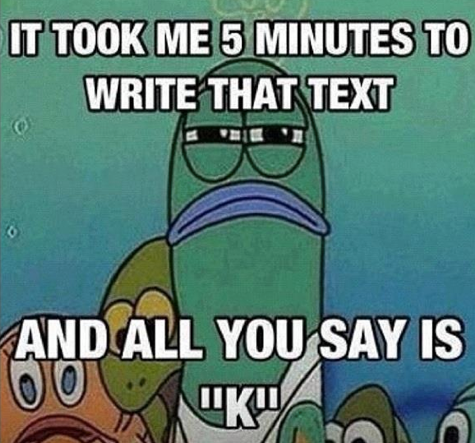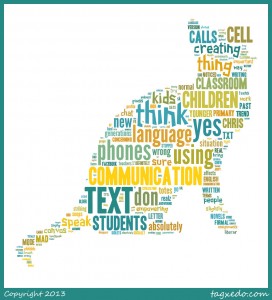First off, sorry this is so late. Apparently there is no WiFi in rural Northern Alberta, who knew?
While reading both Baron and Carrington’s articles on instant messaging and texting I felt as though the information was particularly relevant to me and my life both as a student and now as a new teacher. I remember being in high school and doing a creative English project that I called “MSN Macbeth”. Even though the class was based on creative self lead project, my teacher frowned at the project that I spent hours creating. I was reminded of this through Carringtons article where she presented the idea of, “Standard English as under attack from txting and the ‘addicts’ who use it” (Carrington 2005, 167). This is exactly how I would explain my high school English teacher’s reaction to my project. Baron’s article reiterates this idea of IMing and the language that it has created as being non academic and lesser than Standard English.
It makes sense that these articles would be relevant to me as a high school student being that they were written in 2005, but how can I relate to them now as a future teacher? Is there still a “problem” even though IMing seems to be close to being obsolete? My answer to that would definitely yes, although I do not see it as a problem at all. At first I had some trouble exploring what this new “txting” language would be, since I couldn’t see where I currently use this. As mentioned in Baron’s article, many university and college students use Standard English while instant messaging, and I believe that this has carried on into 2013, at least from my experience (Baron 2005, 130). The place where I found myself most often diverting from Standard English was in places in which I was forced to do so, mainly on the social networking site Twitter. This is when I realized a shift that has happened between the arguments of the two articles and today’s “txt talk’.
As a teenager on MSN and as a young adult nobody ever told me I had to abbreviate my language, I chose to write that was in order to be part of a group, as Baron mentions, “teens often use spoken language to express small-group identity. It is hardly surprising to find many of them experimenting with a new linguistic medium to complement the identity construction they achieve through speech, clothing, or hairstyle” (Baron 2005, 30). However, on Twitter, while I’m choosing to use the site to be part of a social networking group, I am not choosing to abbreviate my language, I am being forced to do so in order to fit into a 140 character limit. Twitter users from all walks of life, and many “academic” people use abbreviations and abbreviated hashtags everyday and nobody blinks an eye or questions their use of language. However, someone like Snooki might use “your” instead of “you’re” and the twitter grammar police will be all over her. Both of these articles lead me to question how are standards for the use Standard English have changed over the past eight years. I personally feel as though Standard English is still the norm and as a society we still have expectations about how language is used.
(Side note: it interested me that Carrington mentioned texters as “addicts” so I counted how many times I looked at my phone during a 6.5 hour car ride and 3 hours in an airport. I counted 37 and I’m sure I missed some since it has become such a regular action for me. According to a radio show that happened to come on at the time, most people check their phones 35 times a day, so I guess I really am an addict. I see a new reality show in the future).
Baron, N.S. (2005). Instant messaging and the future of language. Communications of the ACM, Vol. 48, No. 7
Carrington, V. (2005). Txting: the end of civilization (again)? Cambridge Journal of Education, Vol.48, No.7


